Phnom Penh would present us with mind-bending contrasts, I stated in my last post. At sunrise, after having another go at Tai Chi on the terrace deck, we disembarked, toured the capital in cyclos, then visited the Royal Palace, a spectacular sight. Pagodas and pavilions with swooping, golden roofs; tranquil gardens shaded by mango trees; an ornate, conical stupa containing the ashes of King Norodom Sihanouk; the Silver Pagoda, its floor composed of exactly 5,329 silver tiles. In the center sat the statue of the “Future Buddha,” inlaid with 180 pounds of gold and 2,086 diamonds , one of which forms his third eye and is as big as the Ritz. Our guides, named Rithy and Vuthy, but both called “Tee,” told us that the Buddha symbolizes the virtues expected of a leader: loving-kindness; compassion; sympathetic joy, and equanimity. “We have never had a leader with those qualities,” said one of the Tees. Nor do the Cambodians have one now. The country is a constitutional monarchy, the king (Sihanouk’s son, Norodom Sihamoni) utterly powerless, with nothing to do but sign legislation. The country is governed by what might be called an elected despot; its prime minister, Hun Sen, having held power for more than 30 years, largely through rigged elections.
I suppose the Cambodians are more than willing to put up with Hun Sen’s authoritarianism. Hell, they probably would put up with Genghis Khan. Anything would be better than the Khmer Rouge, who ruled from 1975 to 1979 and wrote one of the darkest, most blood-drenched chapters in modern history, ranking with Armenian genocide of 1915 and the Holocaust. At least two million people, a quarter of Cambodia’s population at the time, died in mass executions or from starvation. Many books have been written about that horrific period. I recommend “Survival in the Killing Fields,” by Haing Nhor, a Cambodian physician who lived through it and portrayed Dith Pran in the movie, “The Killing Fields.”
The Khmer Rouge aim was to radically transform Cambodia into a perfectly classless, perfectly equal, agrarian utopia. What it created instead was a perfectly monstrous, perfectly barbaric reign of terror. Every urban center, including the capital, was emptied of people. Phnom Penh, Siem Reap, and other cities became ghost towns in a matter of days, weeks at most. Their citizens — those lucky enough to escape death, that is — were packed off to the countryside to work on collective farms or in forced labor camps. An unknown number succumbed to famine, exposure, or sheer exhaustion.
The National Genocide Museum, known under the Khmer Rouge regime as S-21, was a prison camp whose inmates were subjected to unspeakable tortures before they were executed. Out of the 20,000 people sent there, only seven adults and three children survived. A high-school campus before the Khmer Rouge took over, it consists of four nondescript four-story buildings embraced by concrete walls and coils of barbed wire. Each classroom was broken up into 20 or 25 cramped, brick-walled cells. Held there in leg irons, voiding their bladders and bowels into small, army-issue ammunition boxes, prisoners were taken out daily to be tortured till they admitted to being enemies of the regime, which called itself the Angka, the Organization. Once they’d confessed, they were transferred to one of the hundreds of killing fields in Cambodia and murdered.
At first, the Angka marked government ministers, bureaucrats, intellectuals, and professional people for death; but in time almost anyone could end up in a place like S-21. If you wore glasses, for example, you were branded as an intellectual and exterminated. Often, no reason whatsoever was needed. A lot of the “enemies of the Angka” were kids under ten. Many of their executioners were themselves children, some as young as 12, brainwashed into becoming conscienceless killers.
Rithy shepherded us through the prison, past the warrens of cells, galleries of the victims’ photos, and displays of various torture devices. Some looked as if they’d been pilfered from an Inquisition museum and refurbished. The point of extracting confessions, he said, was to provide a justification for execution. Prisoners who confessed were told that they were to be rewarded with a transfer to a place with better food and treatment. In fact, they were shipped off to a killing field. Rithy’s grandfather had been one of the murdered millions.
The next point of interest was the killing field at Choueng Ek, a short distance outside Phnom Penh. In hundred degree heat, we strolled along interpretative paths. Depressions in the dusty soil marked the remnants of mass graves. As many as 8,000 people were slaughtered there. Their battered skulls, arrayed on shelves, grinned sightlessly through a narrow window that reached from the foot to the roof of a memorial tower 40-feet tall. The Khmer Rouge guards did not shoot their victims; they bludgeoned them with ox-cart axles while music blared from a loudspeaker mounted in a tree to drown out the victims’ screams. For some reason, it was called “the magic tree.” Another tree, toward the backside of the field, was the most appalling exhibit. Children were tied or chained to it and clubbed to death, Rithy said. I have seen more than my share of death and cruelty, but I could not comprehend what he’d told us. The Cambodians I’d met so far were unfailingly polite, gentle and devout. They press their hands together as if in prayer and bow when they greet each other; they fall to their knees and drop money into alms-baskets carried by saffron-robed monks. How could thousands of them have found within themselves the power to smash the heads of seven or eight year old children? From what mephitic pit had the Khmer Rouge summoned those demons? In the end, I think that the only explanation for atrocities of such depth and scale is theological: Satan’s legions aren’t a metaphor; they’re as real as the blood-stained bark on that tree, as the skulls stacked in that tall, stone tower.
While Nazi war criminals, men in their 90s, are still being tracked down and tried, only a handful of the Khmer Rouge’s senior leadership have been punished. Pol Pot, its leader in the 1970s, died of natural causes in a jungle hideout in 1998, the day before he was scheduled to be extradited to an international tribunal. Khieu Sampan, the Khmer Rouge head of state, and Nuon Chea, its chief ideologue, were not tried until 2014. A U.N.-backed court sentenced them to life in prison, a Pyrrhic victory for justice: Sampan was 83 at the time, Chea 88. Lesser figures are today walking around free; some, in fact, are government ministers and parliamentarians. “My neighbor was a Khmer Rouge soldier,” Rithy disclosed. I asked him how he felt about that. He shrugged. “We get along. He was only a 14-year-old boy then, he had been brainwashed.” Well, I thought, fourteen is old enough to know that murder is wrong, but I held my tongue. Instead, I asked what accounted for this remarkable tolerance. Rithy opined that it was the Buddhist spirit of forgiveness. Neither I nor my companions bought that explanation, or rationalization. It may be that the Cambodians prefer selective memory; to stage mass trials would open old wounds, cans of worms.
The last mind-bend occurred that evening. The Jahan pushed off on a sunset cruise, followed by a buffet dinner on the terrace deck, followed by a presentation of apsara dancing, an art that dates back more than a thousand years. Handsome men and beautiful women in traditional costumes swayed and twirled, moving their hands and arms as if they were double-jointed. But I could not fully appreciate their accomplished grace. I was preoccupied with what we’d seen earlier in the day. Long ago, a Protestant minister told me that a divine flame burns in every human soul, and whether it is faint or bright, it cannot be extinguished. The Khmer Rouge, like the Hutus in Rwanda, the Nazis in Germany, the Turks in Armenia, proved that it can be.
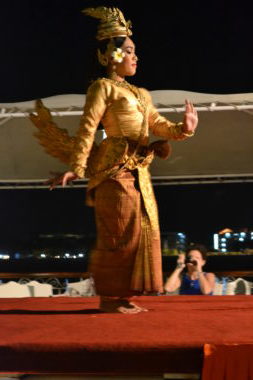
Apsara dancer performing on the Jahan’s terrace deck.
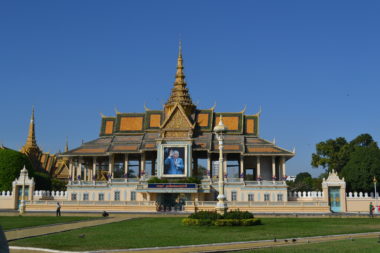
The royal palace in Phnom Penh.
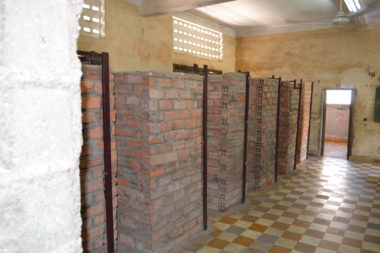
Bricked-in cellblocks in Khmer Rouge prison, S-21
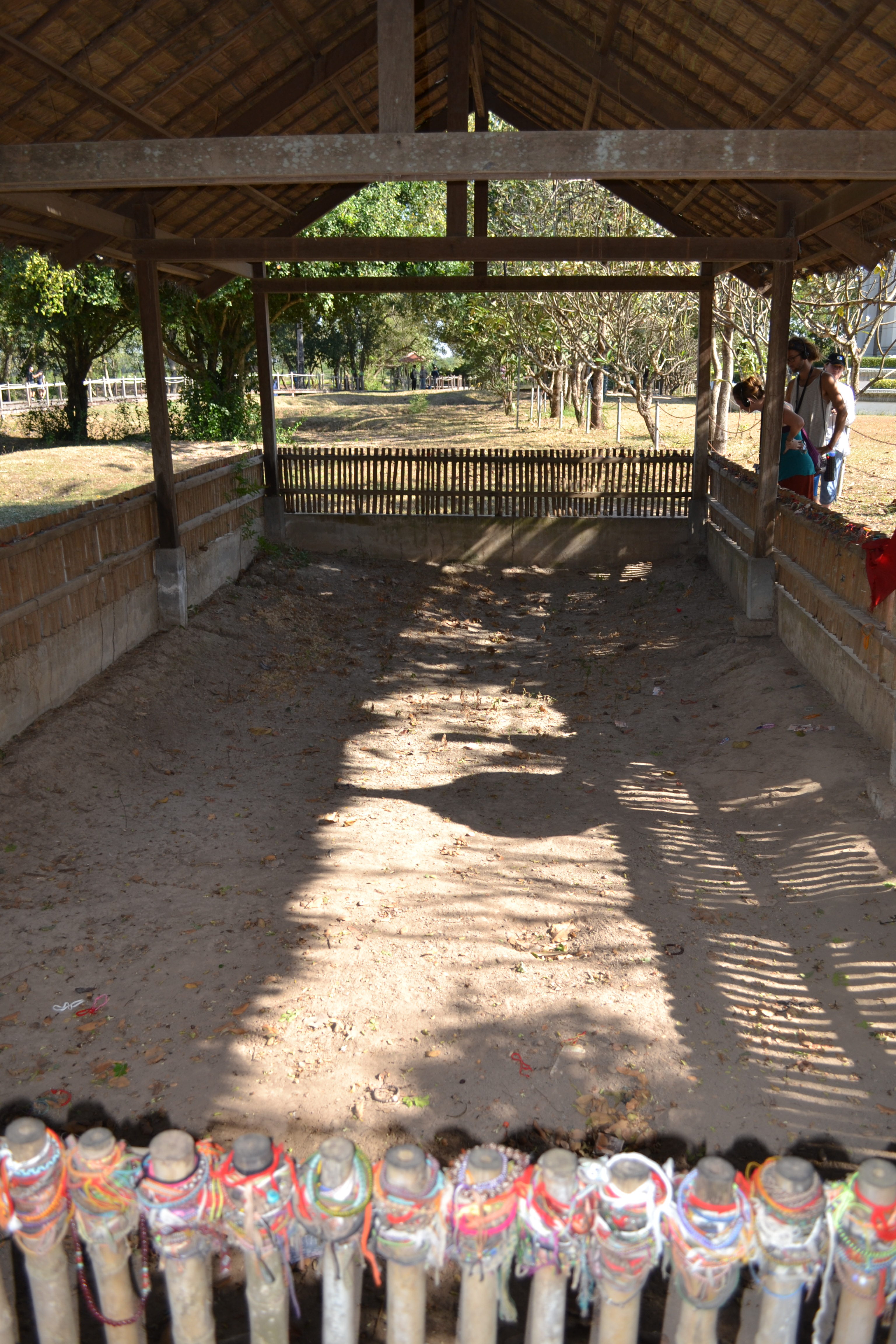
Mass grave site in a killing field, with memorial bracelets on stakes.


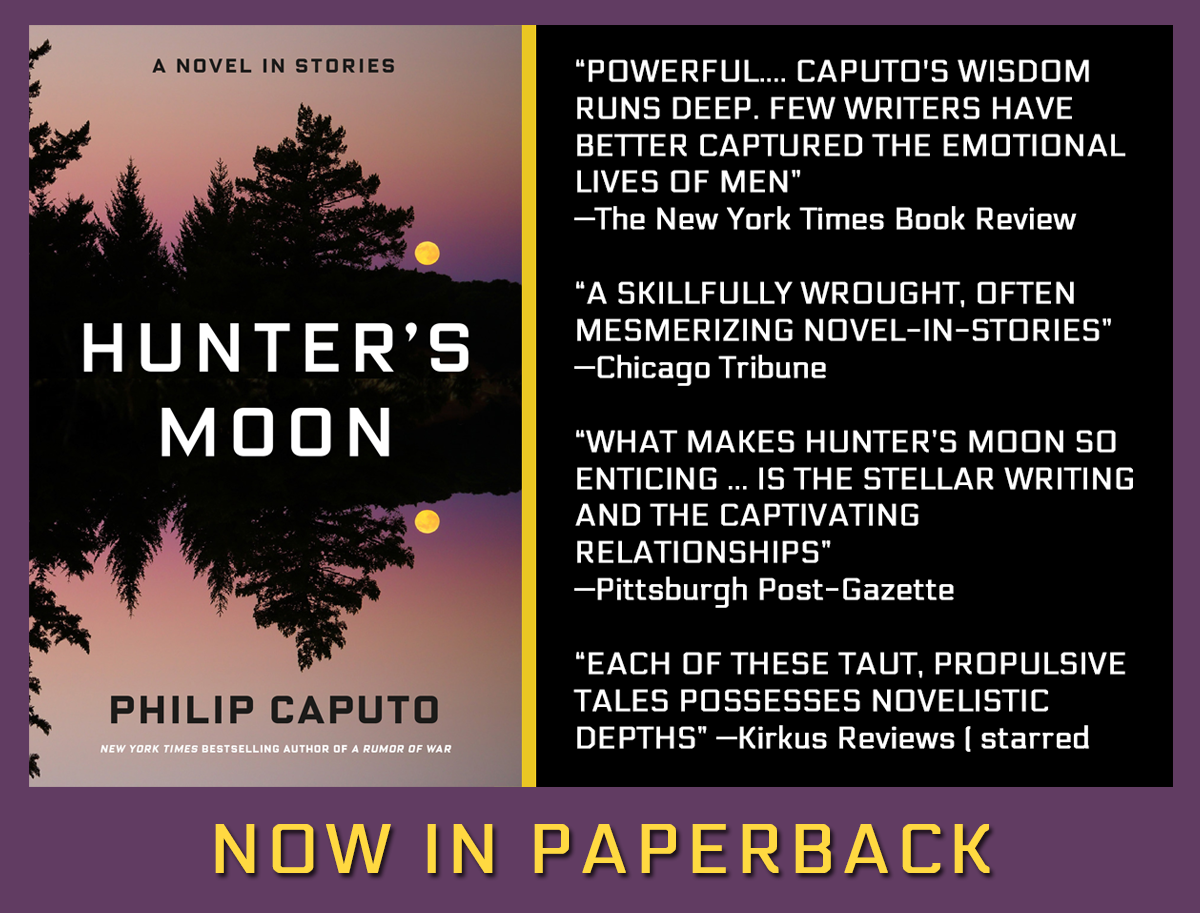
I remember feeling the horrific disconnect between seeing Auschwitz and then modern day Krakow and Warsaw. Only bright spot was that the human spirit somehow survived. You must have felt somewhat the same after seeing S-21 and then boarding your ship.
Thank you for this report. I am grateful that your urge to move still surpasses any urge to sit still. We all benefit from your restlessness. Please remember the Georgia coast as you wander. Best always
Mr. Caputo
These posts have been great, thank you. I was not aware of the details of the 1975-1979 period, wow, what “people” are capable of. Cambodia’s political election system sounds about like Cook County Illinois!
I wait for each new installment with some extreme anticipation. I teach a seminar on “savage ‘little’ Wars” and Rumor is examined carefully. A tremendous piece of work along with Delcorso’s etc. These blog entries are a thrill to read, I could be dead wrong, but I find the thread from the gung ho young man in Rumor, to the less gung ho 🙂 older and wiser, dude, doing/ trying yoga and thinking to himself [I want to guess] really?). Well, it does not matter, I love reading the entries and your thoughts.